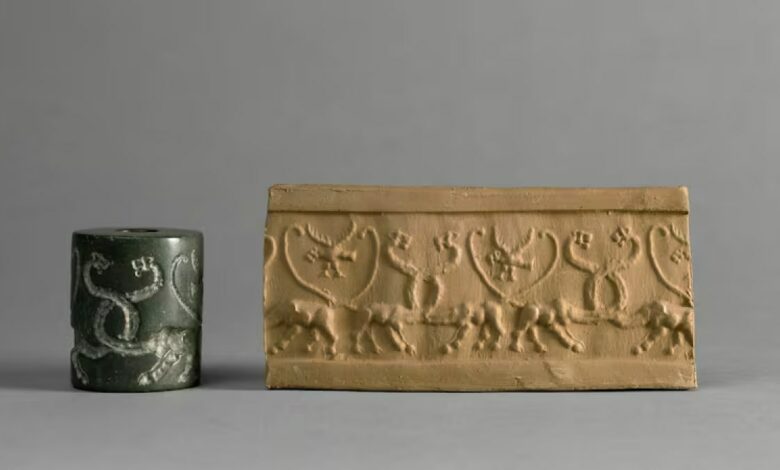Ancient Mesopotamian trade symbols reveal the roots of writing

Researchers studying the roots of writing have emphasized the role of ancient trade symbols found on cylinder seals in Mesopotamia as important influencers of early writing development. A recent study by Kathryn Kelley and Mattia Cartolano of the University of Bologna suggests that engravings on these cylindrical seals, used for marking clay in trade exchanges, may have evolved into signs used in the earliest form of writing, known as proto- cuneiform. These seals date from around 4400 BC and show motifs associated with the movement of goods such as textiles and pots, suggesting a trade-based origin for written symbols.
From trademarks to proto-cuneiform writing
The study notes that cylinder seals, rolled over clay tablets, left impressions that likely authenticated transactions, thus laying the foundation for a system of recording information. The seals examined include symbols that predate formal writing with more than a millennium. These motifs, such as the images of structures or ships, probably became fundamental signs in the proto-cuneiform script, used in early Mesopotamian cities such as Uruk around 3100 BC. These seals may thus provide a bridge between symbolic trade documents and the more formalized proto-cuneiform script, which represents a significant cognitive shift from imagery to systematic writing.
Link to Sumerian cuneiform script
Cuneiform script, developed by the Sumerians, is widely considered the world’s first known writing system. Created with a stylus that pressed wedge shapes into clay, this system evolved to record spoken language. Cuneiform script was later adopted by the Akkadians and maintained for nearly two millennia and was widely used across the Mesopotamian empires, from the Babylonians to the Assyrians, creating a lasting legacy.
Diverse academic perspectives on symbolic origins
The study’s findings have drawn support and skepticism. Holly Pittman of the University of Pennsylvania noted that similar ideas she proposed in the past have been rejected but have now received validation through this study. Anthropologist Gordon Whittaker of the University of Göttingen remains cautious, pointing out that the link between seal motifs and writing symbols may not have clear causality.
The researchers hope their findings will further aid in the decoding of proto-cuneiform writing and deepen understanding of the transition from trade symbols to structured writing – a milestone in the development of human communication.
For the latest tech news and reviews, follow Gadgets 360 X, Facebook, WhatsApp, Wires And Google News. For the latest videos on gadgets and technology, subscribe to our YouTube channel. If you want to know everything about top influencers, follow our in-house Who is that360 on Instagram And YouTube.

WhatsApp starts testing ‘Search on Web’ image lookup feature on Android
OnePlus starts OxygenOS 15 closed beta program for OnePlus Nord CE 4, Nord CE 4 Lite 5G in India





